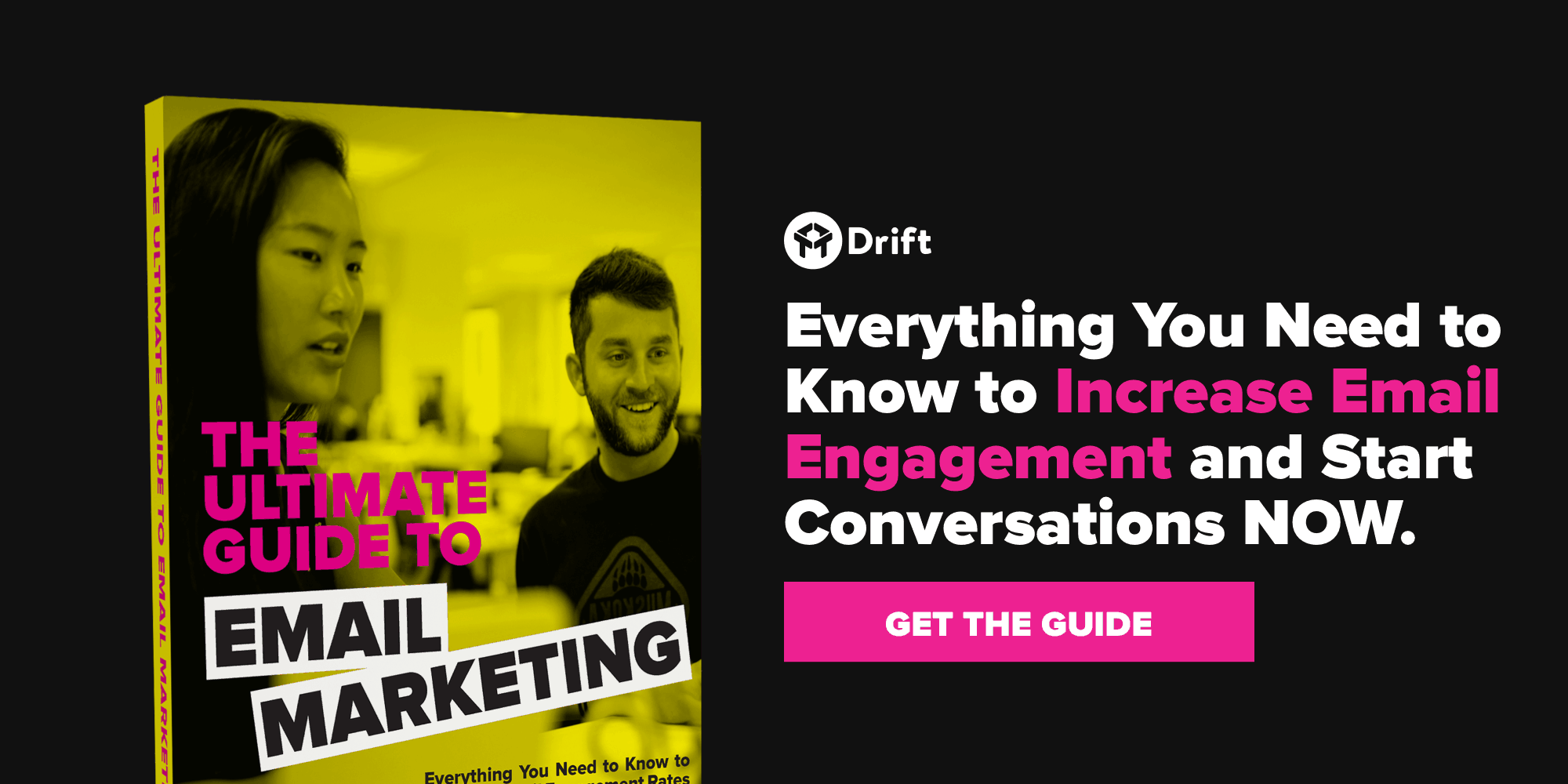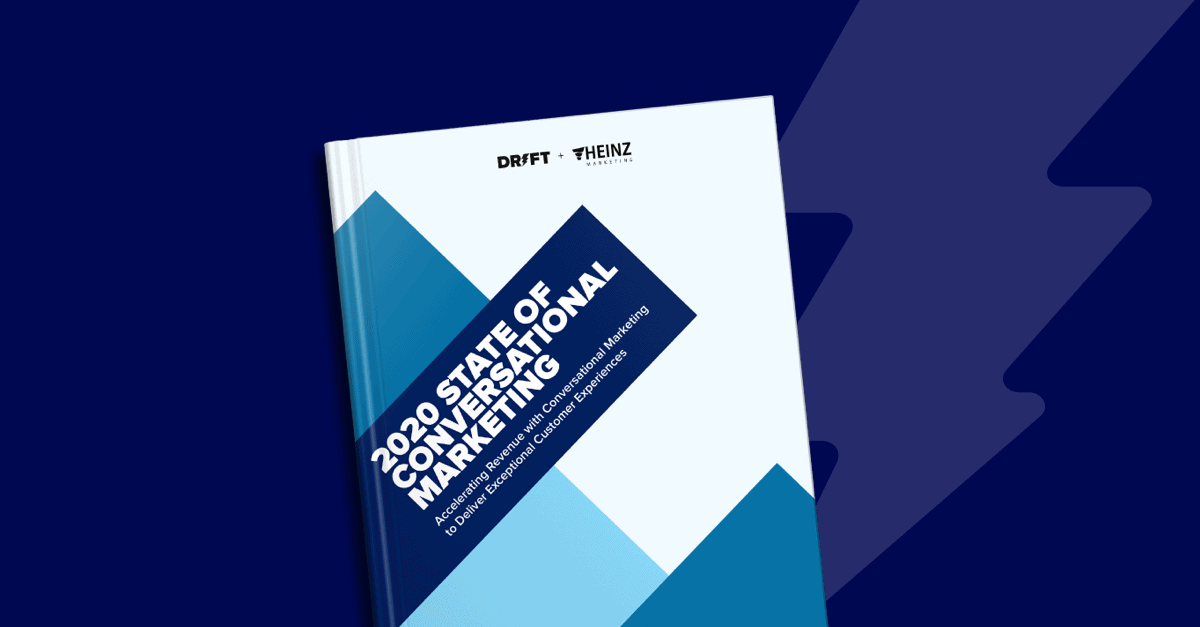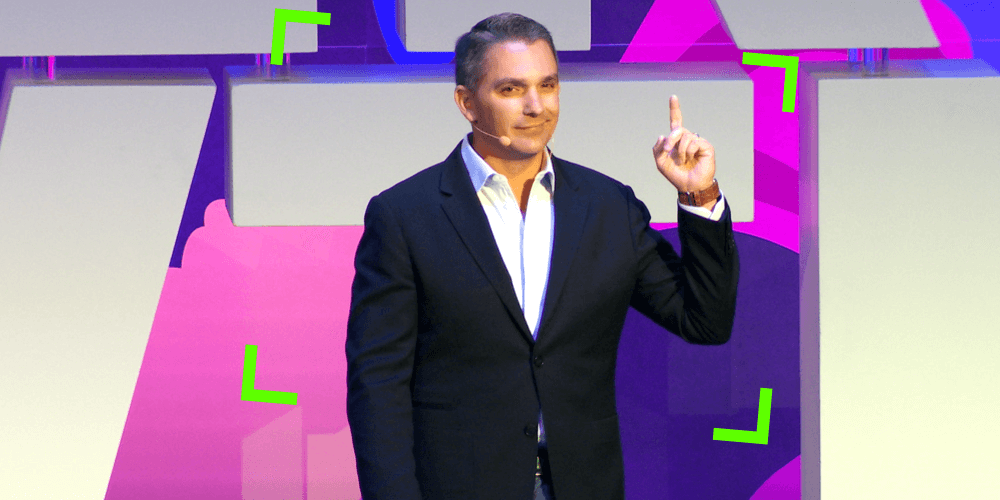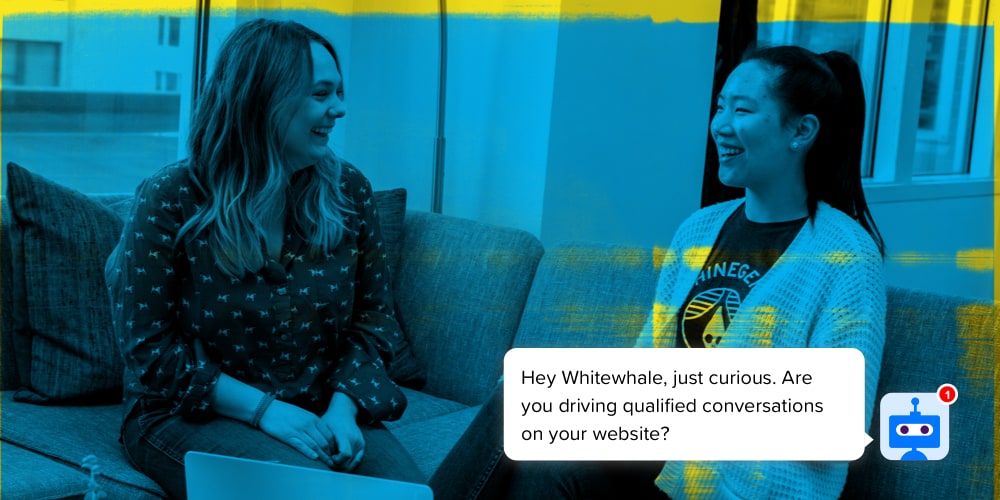
Businesses can no longer rely on product and price to stand apart – buyers are looking for experiences worth remembering.
In a recent customer engagement survey published by Salesforce, more than 8,000 consumer and business buyers revealed the following:
- Customers’ happiness depends as much on the quality of a company’s engagement as the quality of the product or service they’re buying
- Customers are increasingly open to companies using new technologies to improve their experiences
- Personalization, timeliness, and connectivity are the three foundations of exceptional customer engagement
- Ethics and trust are key to winning customers’ business and loyalty
Salesforce defines customer engagement as “how brands connect with customers across all touchpoints and build relationships over time.” At Drift, we stress the value of relationships throughout the buying journey and believe real-time communication plays a crucial role.
Unfortunately, the majority of businesses aren’t there yet: 54% of all customers surveyed by Salesforce think companies need to fundamentally transform how they engage with would-be buyers.
This shift in expectations isn’t surprising. As Neeracha Taychakhoonavudh, EVP of Industries at Salesforce puts it: “Customers have all the power now.” They get to choose where, when, and how to interact with companies.
Based on the aforementioned Salesforce research, and dipping into a bit of our own, we compiled a list of the major trends shaping consumer expectations and steps for how your company can tackle them head-on.
Read on to see five of the trends.?
1. Real-Time Engagement
71% of all respondents now expect companies to communicate with them in real-time and are looking for real-time, two-way dialogue – across all channels. In other words, your buyers want the same intimate experience online as they get in-store.
Our own State of Conversational Marketing report backs this up. In the report, buyers said that they want the same response time in a digital space as they get with face-to-face communication.
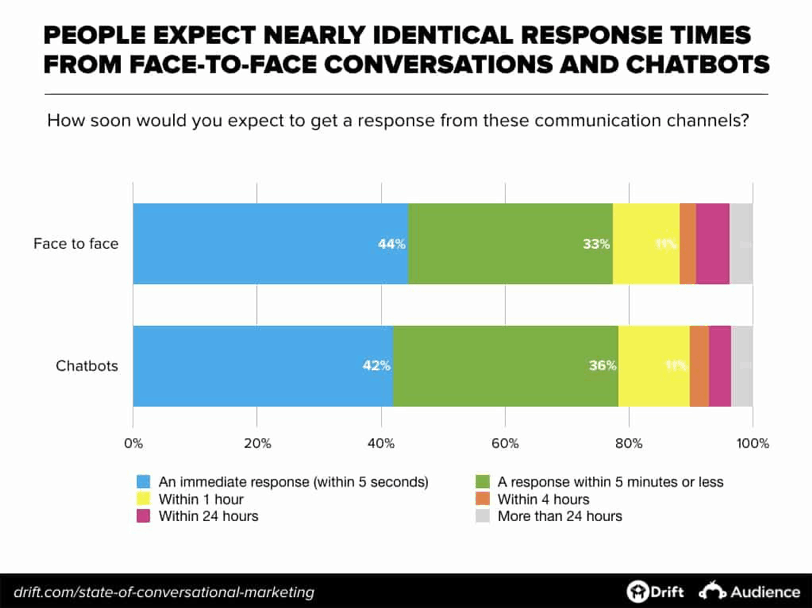
This shift in expectations introduces new challenges for marketing and sales, as teams need to reevaluate the very systems they use to engage with customers.
For marketers, it means throwing away landing pages with little value other than housing a form and focusing on delivering experiences that are authentic, personalized, and frictionless.
For sales, it means not waiting 24 hours to follow-up with a prospect (or sometimes even longer!), but instead providing an open channel of communication. Buyers now expect companies to:
- Know what they want before they ask
- Offer full autonomy for when and how they communicate
In Drift’s report, 86% of respondents said they preferred to engage with chatbots over filling out a form on a website.
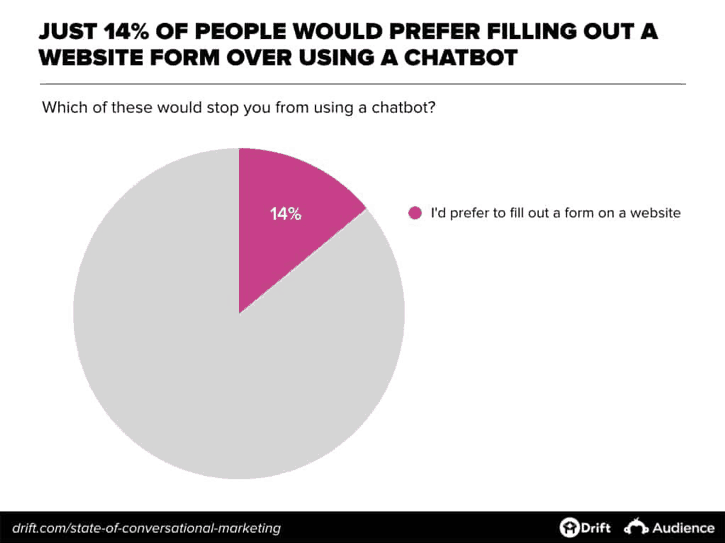
Further, respondents indicated that their number one source of frustration when interacting with a company online was the inability to “get answers to simple questions.”
For marketers, comments like these are a reality check. You can’t always control where your customers find you online. Ensuring that your marketing channels are optimized to answer buyers at their convenience will remedy these pain points.
As shown below, high-performing marketing teams are developing new and creative ways to interact with buyers in real-time with chatbots. Check out a full rundown of how chatbots are transforming the modern customer journey here.

2. Personalization
Personalization was found to be another critical factor in a customer’s satisfaction with a business. 73% of Salesforce respondents said companies should understand and cater to their needs, and 62% stated that they expect companies to adapt to their actions and behavior.
Yet despite this rise in expectations, only 47% of consumers said companies are meeting these demands.
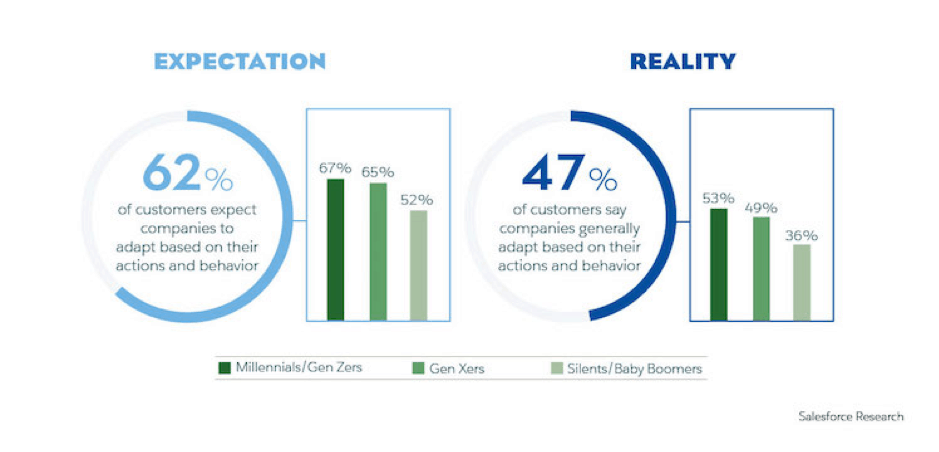
Shep Hyken, a customer experience expert, keynote speaker, and best-selling author, is a long-time consumer advocate. In a recent Forbes article, Shep not only spoke about the power of creating a personalized experience for ensuring long-term loyalty, but also indicated that it had a lasting impact on future revenue.
Shep found that those companies who employed personalization into their marketing:
- Drove impulse purchases
- Increased revenue
- Impacted long-term loyalty
3. Trust
Buyers are growing increasingly skeptical of brand authenticity. And who can blame them? A cursory search through the news demonstrates that companies have been negligent in the handling of people’s data. From Cambridge Analytica to Equifax to Facebook – consumers are frustrated at the lack of transparency, and rightly so.
73% of customers state that trust matters more than ever before – but find that companies are severely lacking in bridging that trust. More than half of the respondents said companies aren’t being honest with how their data is being used. 43% of those customers said they’ve stopped working with companies due to privacy issues.
And trust doesn’t just impact whether a customer chooses to continue working with a company. It also affects how they speak about or whether or not they’ll recommend a company.
In a separate Salesforce study on Managing the Customer Trust Crisis, 93% of consumers stated that they were more likely to recommend a company they trust.
These same customers said trust was critical to their decisions when it came to their future buying decisions. (I.e., whether they’d spend more and buy more frequently.)
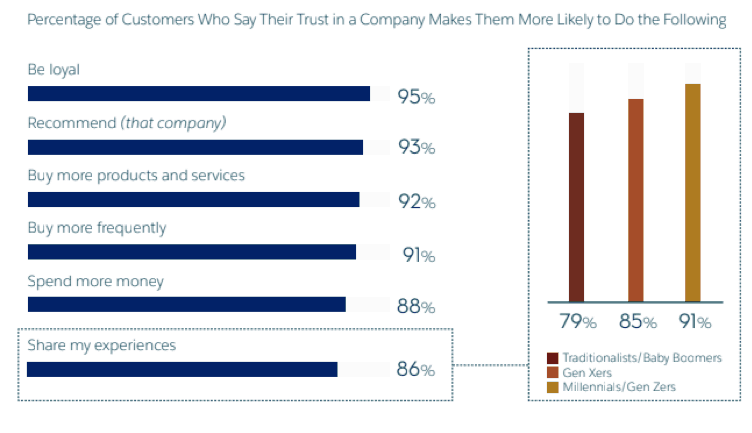
4. Embracing AI
62% of those surveyed by Salesforce are open to the use of AI to improve their buying experiences. As consumers grow more familiar with every-day AI like Siri and Alexa, they’re more willing to accept and interact with AI in their professional lives. In the enterprise, AI might appear in the form of an intelligent chatbot or connected device.
Drift customers harness the power of AI with Drift Automation. Using a qualification bot, marketing and sales teams can scale their outreach and engagement efforts. Think of it as part of your frontline SDR team.
Here’s how it works:
- We teach the AI: First, we allow our AI to analyze previous conversations so your bot can better understand your business.
- Our annotation team trains the AI: Our team and yours work together to perfect the AI’s answers and schedule a small audience test. From there, it scales.
- The AI soon becomes a valuable team member: We implement the qualification bot on your website and it becomes a 24/7 member of your team.
Drift customer EAB found a ton of success when they teamed up with Drift to automate engagement during their off hours. Like other companies, they had a difficult time keeping up with the demands of a 24/7 audience while also maintaining a great customer experience. Then came “Eabert” and a 120% increase in demo requests.
5. Channel-Agnostic
My terms, when I want and where I want to. That’s the attitude of today’s consumer. More than this, people want their experience with companies – no matter the channel or device – to be consistent.
Chatbots and online chat are just one piece of the puzzle. Consumers have more avenues than ever to communicate with companies. Our State of Conversational Marketing report confirmed that email is still alive and thriving as a primary channel for connecting. Plus, it was the only channel to grow year over year as the preferred form of communication.
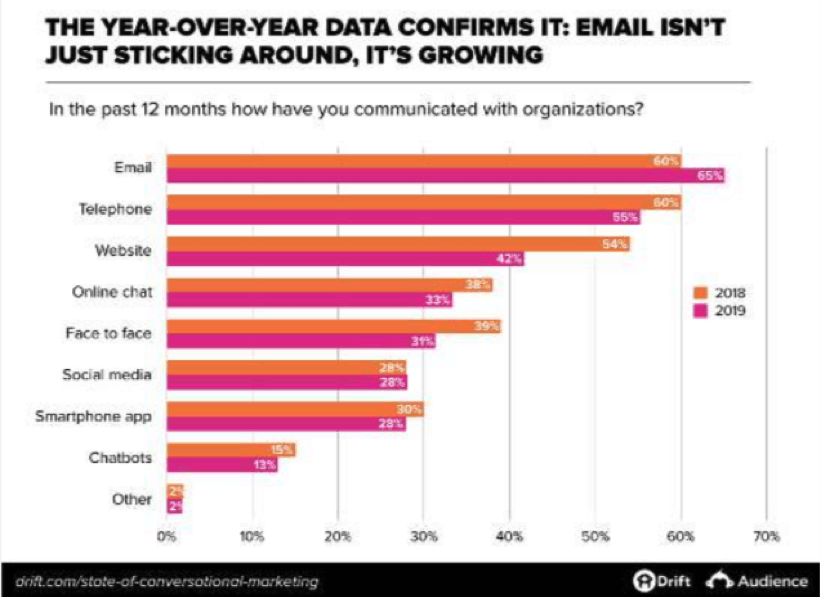
Outside of email, marketers should look to spearhead emerging technologies that streamline interaction with their customers.




